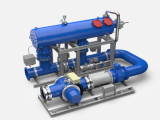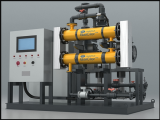Ballast water management system


In the modern reality of international shipping, this equipment will soon become an indispensable part of it, just like other traditional equipment designed to protect the environment in its current form. Factors affecting the purchase of sub-equipment ♦ Current convention: On February 13, 2004, the "International Convention on the Control and Management of Ship Ballast Water and Sediments" (hereinafter referred to as the "Convention") was ratified.More than 12 years later, on September 8, 2016, the Convention was ratified and entered into force one year later. For ships under construction, everything remains the same-if the keel is laid after September 8, 2017, the ship must comply with regulation D-2 before completion. Ships in service must meet the D-1 standard.The relevant organizations have agreed on a timetable for the implementation of the D-2 standard based on the date of the review of the International Oil Pollution Prevention and Control Certificate (IOPPC), which should be conducted at least once every five years. In the end, all ships must meet the D-2 standard.For most ship owners, this means that special on-board equipment needs to be installed. ♦ Multi-stage inspection of port supervision: More and more ship owners need to provide these documents to prove the availability of these systems.During the inspection period, the following tasks will be carried out: preliminary inspection, detailed inspection, preliminary sampling and detailed analysis. ♦Consequences of non-compliance with the rules: In the process of determining that there is no such device or its improper operation, the shipowner may suffer significant losses in the form of ship seizure, fines, company blacklisting, and criminal penalties. Following the United States and the United Arab Emirates, more and more countries have begun to actively check ships for the existence of these systems. In order to solve this problem, we can provide you with a ballast water treatment system.

